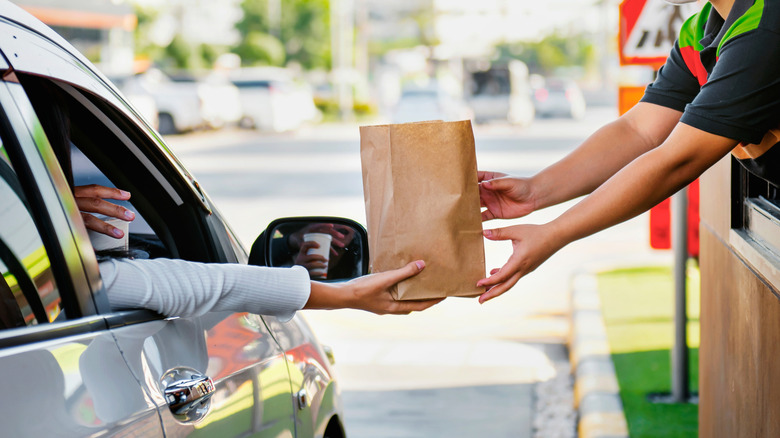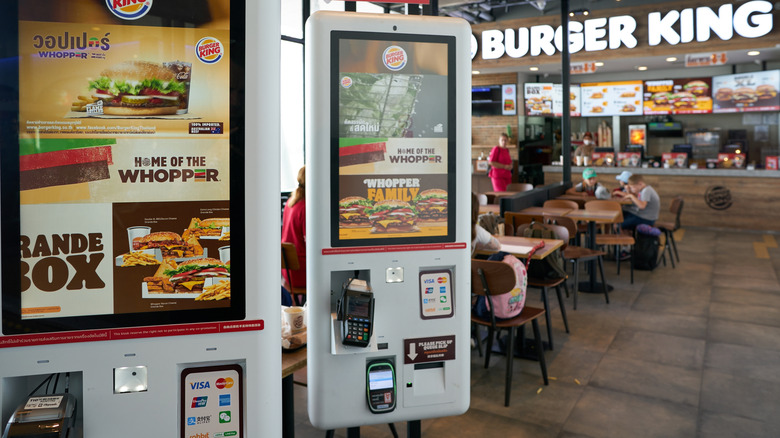The Secret To How Fast Food Chains Make Your Order So Quickly
Whether you're running late to work or just don't feel like leaving your car, fast food is an easy, affordable, and quick meal option. But have you ever wondered how your burger and fries are ready in the time it takes to roll from one window to the next? The answer lies in a highly optimized kitchen system designed for speed, efficiency, and consistency.
At the heart of most fast food operations is an industrial-style kitchen filled with equipment built for volume and speed, such as deep fryers with baskets big enough for pounds of fries or oversized griddles that can cook dozens of patties at once. Add to that the assembly line model, where each worker is responsible for just one part of the process — grilling, assembling, wrapping — and you've got a streamlined operation that churns out meals in record time.
Ingredients are also a big part of the equation. While there are some fast food chains that use fresh and never-frozen burgers, many rely on pre-portioned, frozen components like patties and fries, which are cooked to order but don't require prep from scratch each time. Menus are designed to quicken the process as well, as many chains stick to a core list of ingredients that get reused across different items, meaning fewer moving parts and faster assembly. Even when the menu looks large, it's often the same base items repackaged in slightly different ways. Not only does this aid efficiency, but it's also a driving factor in how fast food restaurants turn a profit.
Technology is speeding up the process
While drive-in restaurants and now-iconic fast food joints rose to popularity years ago, modern technology has taken their speed and efficiency to a whole new level. Chains like Burger King, Taco Bell, and Panera Bread have widely adopted digital ordering kiosks, allowing customers to place their own orders directly on a touchscreen. Having multiple ordering machines reduces wait times, cuts labor costs by minimizing the need for cashiers, and improves order accuracy by removing the chance of miscommunication. Kiosks also have an unexpected upside: They encourage customers to order more. Without the pressure of a line forming behind them or an employee waiting at the counter, fast food kiosks quietly make you spend more than you planned, as people tend to browse longer and make additional impulse purchases with just a tap.
Additionally, mobile ordering apps have streamlined the process even further. Customers can order in advance and simply pick up their food upon arrival, with no waiting or back-and-forth at the counter. This not only reduces in-store congestion but also allows employees to focus entirely on food prep, speeding up output during peak hours.


